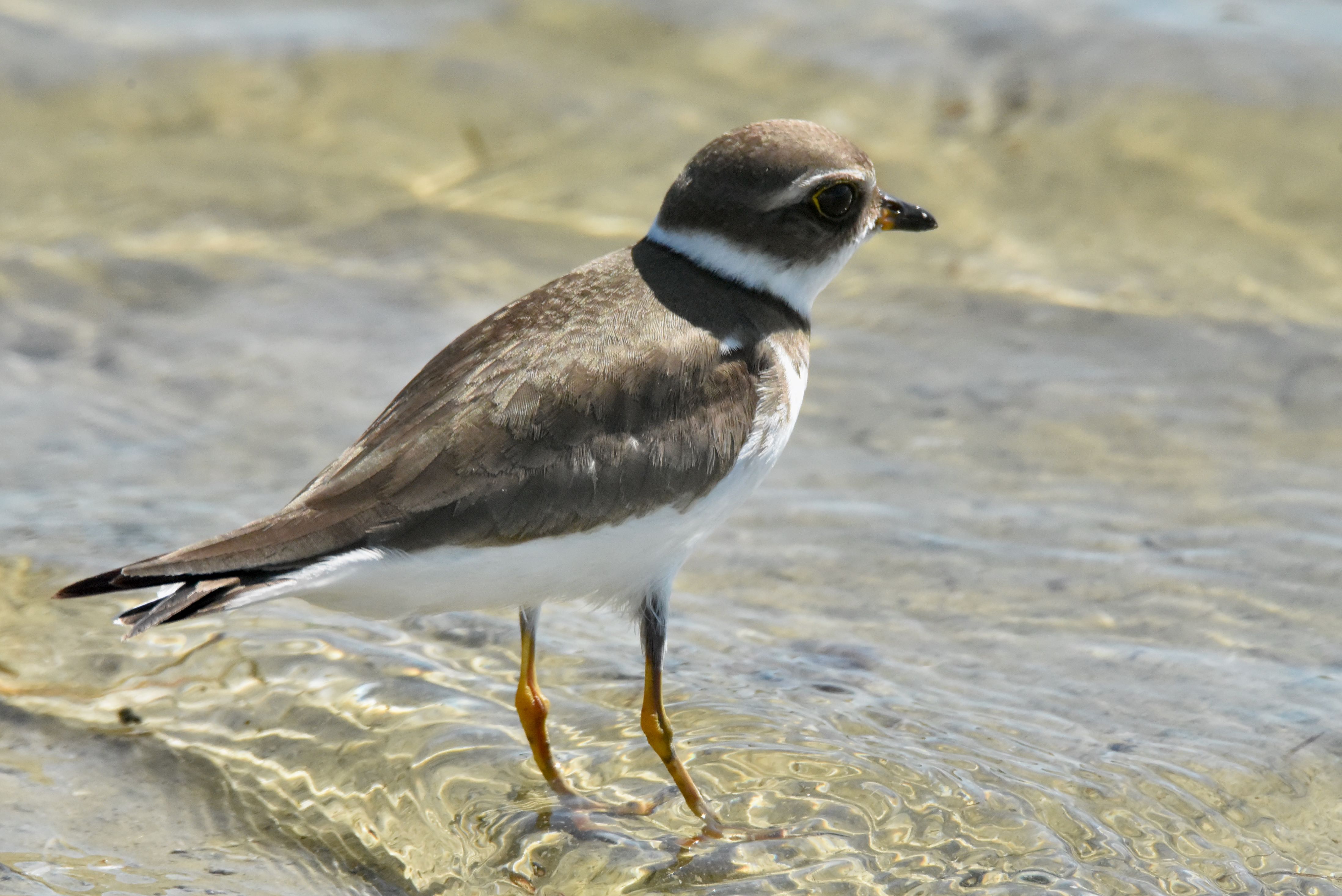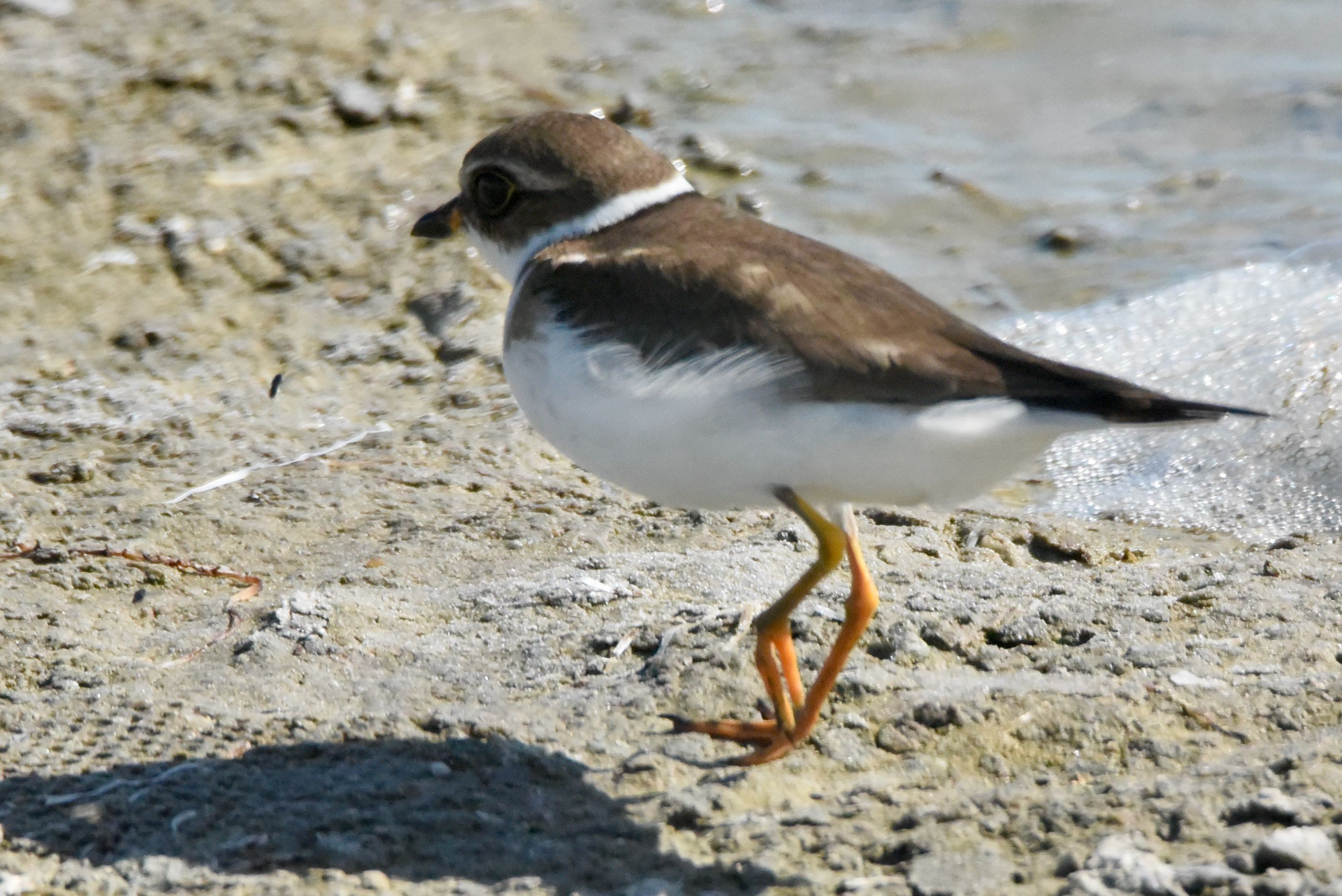
Semipalmated plover, photographed at Tigertail Beach, Marco Island, Collier County, in February 2020.
The semipalmated plover gets its name from the bit of webbing between its toes. It’s similar in its looks to several of its plover cousins, but fortunately for us, we don’t need to get a close look at its feet to identify it.
Scientifically known as Charadrius semipalmated, the semipalmated plover can be found over almost any part of North America, depending on the time of year. It spends summer in the Arctic and sub-Arctic parts of Canada and Alaska. In winter, it retreats south on the Atlantic side to coastal North Carolina to Florida, along the Gulf to Texas, Mexico and Central America and beyond. Out west, it winters along the coast from California to South America. Some maps we’ve seen have it wintering as far north as Puget Sound. In migration, it can be found anywhere in between.
In Florida, it’s a fairly common winter visitor to beaches and mud flats along both the Atlantic and Gulf coasts, where they forage for crabs, sea worms and other aquatic delights.
Semipalmated plovers are small, plump birds, about 6.5 to 7.5 inches long, with wingspans between 18.5 and 20 inches. They’re dark brown above, white below, with a single black band around the upper part of the chest. They look similar to killdeers, another plover, but the semipalmated's single chest band separates the two. It also resembles the Wilson’s plover, but the bill on the semipalmated is a little thinner and shorter than the Wilson’s. More importantly, the bill on the semipalmated is two-toned, orange near the base, black near the tip. The Wilson’s is black the entire length. One more tell: the legs on the semipalmated are bright orange; on the Wilson’s they’re a dull pink. The two-toned bill is similar to a snowy plover, but our guy is a much darker brown than the lighter snowy.
Male and female semipalmateds look alike during the winter; in summer the two share the same color pattern, but the male is much sharper in contrast with the ladies of the species.
They breed in the extreme north of the continent from late May to late August. They’re ground nesters, scraping out a hole for their nest in open areas with sandy or gravelly soils or in a place with sparse vegetation. The scrape might be lined with softer materials, like leaves and grass. Clutches are two to five eggs, typically four, which require 23 to 25 days of incubation before hatching. Both parents share sitting duties. The young leave the nest soon after hatching, and are able to feed themselves. Both parents otherwise tend to their offspring, but after about 15 days mom takes off, leaving dad to care for the brood. First flight is at three weeks to a month; they become sexually mature at two or three years. The oldest semipalmated ever recorded was at least 9 years old, but most don’t make it near that age.
Semipalmated pairs are monogamous for the season but not beyond. Males will return to the same nesting territory year after year, but females generally don’t follow, especially if the nest the year before was unsuccessful.
The diet of the semipalmated varies according to the time of the year and the location. They eat crabs, sea worms and other aquatic invertebrates most of the year, but while inland on migration they tend to eat a lot of insects, including flies, grasshoppers, beetles and mosquitoes, among others, and will also eat seeds and berries. Many eastern semipalmateds will pitstop at Delaware Bay for several weeks. Along with red knots, they'll eat their fill of horseshoe crab eggs before resuming their journey south. They migrate and roost in mixed flocks, but tend to forage alone.
Semipalmated plovers are members of Charadriidae, the plover family.
Click on photo for larger image
Links for Semipalmated Plover



